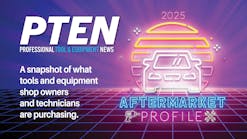Bendix addresses key trucking regulations at ATA industry forums
The trucking industry has reached “a key moment” with the advent of autonomous vehicle technology and its potential impact on industry governance, said a Bendix official speaking to trucking leaders on Monday. Fred Andersky, Bendix director of government and industry affairs, presented at the American Trucking Associations Management Conference & Exhibition, on Oct. 3. He participated as part of a panel in the education session “More Regulations – What You Should Expect Next, When and Why.”
Among the takeaways from his talk: The federal government’s 2015 final rule requiring full-stability technology on Class 7 and 8 tractors and motorcoaches begins to take effect next year, but it’s only a starting point. The mandate covers vehicles having the most issues with stability, while acknowledging it may not be currently feasible to equip all vehicles in certain classes with the technology.
Another key point concerned crash avoidance technology. Andersky said a rulemaking is likely to happen – even with so much of today’s focus on autonomous vehicle technology. On the subject of autonomous vehicle advancements, he noted, the recently released federal guidelines surrounding them affects vehicle manufacturers more than fleets – at least at this stage, as fleets later will bear the burden of evaluating the technology.
Andersky opened his comments with a caveat: A lot of what happens will depend on who wins the upcoming election, from the president on down through other races.
“We are at an exciting crossroads with the advent of autonomous vehicle technologies – and what may result in regulations and what may not,” Andersky said. “Needless to say, it’s going to be an interesting future on the regulatory front.”
Stability today and tomorrow
In June of last year, the National Highway Traffic Safety Administration (NHTSA) issued its final rule requiring full-stability technology (ESC, or Electronic Stability Control) on Class 7 and Class 8 truck tractors and motorcoaches with a gross vehicle weight rating of greater than 11,793 kilograms (26,000 lbs). NHTSA will implement the mandate in three phases, starting August 1, 2017, for most three-axle tractors.
Andersky noted that ESC is the foundation for future safety technologies. Discussing key facts around the mandate, he pointed out the wide availability of full-stability technology on air-braked vehicles like tractors, motorcoaches, and heavy-duty straight trucks. That is not the case, however, for hydraulically braked vehicles, such as Class 3-6 straight trucks.
According to Andersky, only a small number of Class 7 motorcoaches are hydraulically braked, yet NHTSA is requiring them to have ESC as of Aug. 1, 2019, the mandate’s third phase of implementation. By starting with the Class 7 motorcoach mandate, he suggested, NHTSA may be trying to push for development of a system that addresses the lack of ESC technology for hydraulically braked Class 3-6 vehicles.
Regarding performance testing, Andersky made special note that the sine with dwell test – a yaw test that had been a chief concern of the major truck manufacturers – has been eliminated from the rulemaking. But while NHTSA did not specify a yaw-performance test, he said, the agency reserved the right to add one in the future, and sine with dwell still appears to be their favorite.
Crash avoidance technology to the fore
Development of crash avoidance technology is ongoing, Andersky told the attendees, and it’s on a parallel path with autonomous vehicle technology growth. A Notice of Proposed Rulemaking (NPRM) on crash avoidance technology is likely to come in 2018, with a requirement for a newer-generation system, Andersky said. However, he sees 2017 as still feasible if NHTSA bases the proposed rulemaking on existing research, rather than undertaking more research in the field with newer systems.
Driving forces for the NPRM are many, including a petition for rulemaking submitted in February 2015 by the Truck Safety Coalition, the Center for Auto Safety, Advocates for Highway and Auto Safety, and Road Safe America. Later in 2015, the National Transportation Safety Board called for the federal government to make forward collision avoidance systems a requirement on all new motor vehicles, including large trucks.
For a point of reference, Andersky outlined the Advanced Emergency Braking System (AEBS) regulation in place in the European Union (EU).
As the U.S. rulemaking’s timing is uncertain, so is the approach. Andersky speculates the rule will affect Class 3-8 commercial vehicles, and come with performance expectations that include braking on stationary vehicles, rapid reduction in closing speeds, and low false alert and false intervention rates – while meeting or exceeding the EU mandate.
“Expect the rulemaking to also cover the ‘doughnut hole’ in stability, by requiring stability on all vehicles not previously covered,” Andersky said, noting the absence of a stability mandate for Class 3-6 vehicles. “This is how the agency moved forward on ensuring all light vehicles had antilock braking systems (ABS) – by requiring stability, you require ABS. It will likely be a similar scenario for crash avoidance technology, which requires ESC as its foundation.”
Federal automated vehicles policy
Andersky also discussed NHTSA’s recently announced guidelines for the development and deployment of autonomous vehicle technologies. The policy is for all autonomous vehicles – Classes 1-8, light-, medium-, and heavy-duty – that will be deployed in the U.S.
The policy is considered guidance, he said, not a regulation. For the most part, it’s now in effect. The government recognizes that development of new technology is inevitable, and translating insight and goals into early guidance can achieve more safety improvements. Issuing guidance offers flexibility, nimbleness, insight, and open communication.
Factors behind the guidance, Andersky said, include statistics: 35,092 people died in crashes in 2015, and 94 percent of crashes are caused by human choice or error. Further, human beings can repeat mistakes, while machines can self-learn, improve, and gain insight from other vehicles. Plus autonomous vehicles can go beyond safety by transforming personal mobility, increasing capacity on existing infrastructure, and contributing to environmental improvements.
Is it a good policy? It may be, according to Andersky, but much depends on its implementation – including use of current regulatory tools, such as interpretations, exemptions, rulemaking, defects, and enforcement.
Most affected by the guidelines, he said, are OEs, suppliers, and other entities developing, deploying, or producing autonomous vehicles and applications. Fleets will be affected later, when it comes time to test the technologies in their operations to ensure the systems meet their needs and performance expectations.


